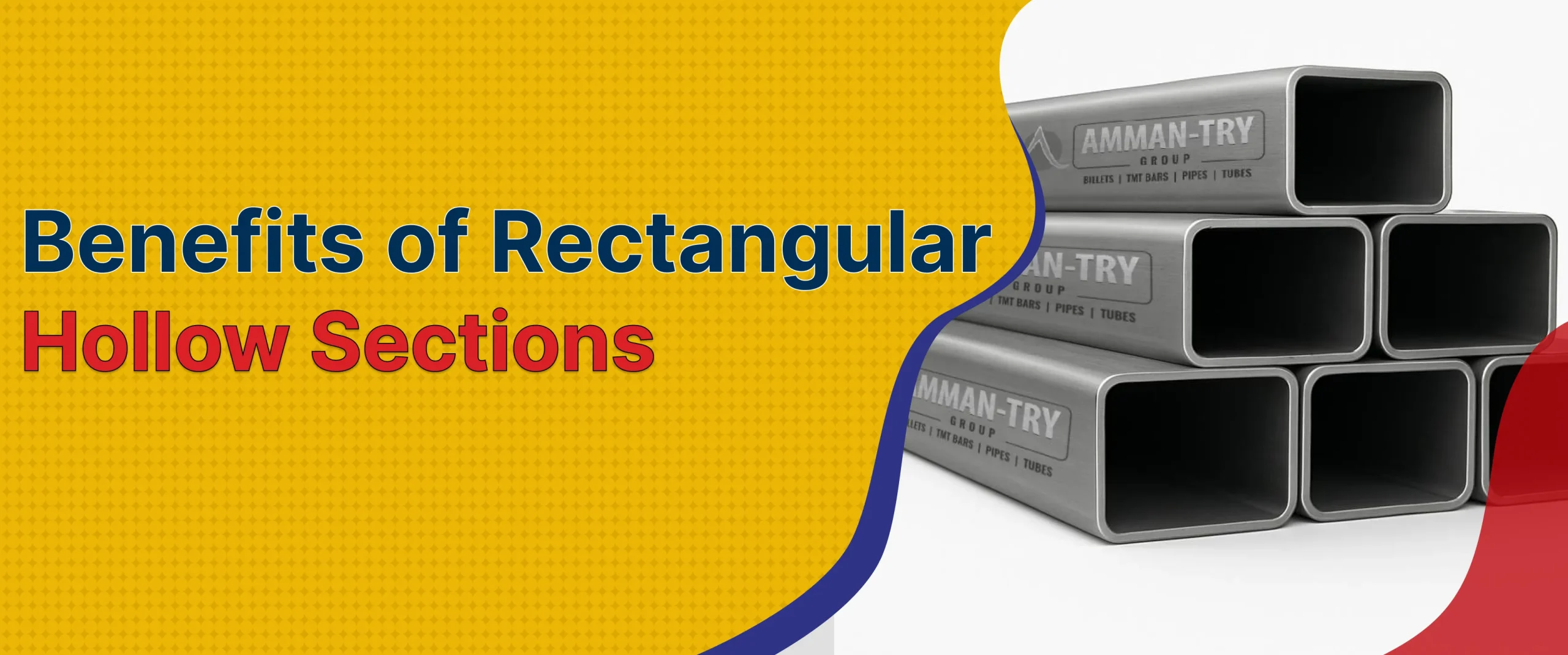Rectangular-shaped hollow sections are employed in construction, automotive, and furniture manufacturing for their dimensions and structural integrity. These hollow sections are highly used because of their flat surface. Their flat surface with the most inexpensive joining provides great structural solutions for different types of production work. The RHS needs minimum edge preparation before welding and other joining techniques.
Rectangular hollow sections of steel pipes are very light in weight with extreme strength. These are made in different shapes, sizes, and dimensions. These hollow sections are also highly tensile with more strength. It also gives extreme resistance to weather corrosion, crevice corrosion, and stress cracking.
RHS Applications
Bridge & Infrastructure
RHS provides the high directional strength needed for long spans in bridges, overpasses, and support gantries.
Building Beams & Frames
Used as primary load-bearing beams and perimeter frames in residential and commercial construction.
Vehicle & Trailer Chassis
The high strength-to-weight ratio is crucial for manufacturing durable yet lightweight chassis for trucks and trailers.
Rectangular Hollow Sections Characteristics
Profile and Strength
RHS has a rectangular shape, this shape means strength exists in one direction. For this reason, RHS makes great sense for predictable and unidirectional loads. An example would be beams with bending occurring along the same plane.
Weight and Material Usage
RHS can be made significantly lighter while maintaining strength. In a rectangular shape, steel is put where it is needed, often allowing for an overall design with less equipment, and less material, while achieving the same design strength.
Usability and Fabrication Ease
The most significant practical difference is usability during fabrication. RHS offers significant, usable, flat areas for continued fabrication operations like welding, cutting, bending, and assembly.
The Workhorse of Structural Strength
Rectangular Hollow Sections have been unequivocally developed as the workhorse of heavy-duty structural strength applications. The load-bearing strength and resistance to bending makes RHS an obvious choice. They are used widely for strong frames of buildings, beams, and strong columns that establish superior structural strength for various building types. However, the use of RHS shapes isn’t just relegated to buildings. We are seeing compelling infrastructure projects that rely heavily on RHS, including bridges, flyovers or tunnels where it must withstand significant environmental stressors and heavy loads over long periods.
Key Benefits of Rectangular Hollow Sections
Exceptional Structural Integrity and Strength
RHS is celebrated for its robust structural integrity and strength, primarily attributable to its superior strength-to-weight ratio. Its rectangular shape is engineered to efficiently distribute loads, significantly enhancing the overall stability of constructions.
Cost-Effectiveness and Economic Benefits
The use of RHS translates into tangible financial advantages throughout a project’s lifecycle. Its lighter weight directly leads to lower transportation costs, as more material can be moved per shipment, and reduced installation expenses, as lighter components are easier and quicker to position.
Sustainability and Environmental Benefits
RHS aligns well with modern green building practices and sustainability goals. Its optimized design allows for a significant reduction in material usage without compromising structural integrity, minimizing the consumption of raw resources.Being highly recyclable, RHS reduces the demand for virgin raw materials and minimizes environmental impact throughout its lifecycle
Yes, especially RHS. They contribute to sustainable construction in many ways: design allows material reduction without loss of strength, are highly recyclable, lower weight means fewer related emissions in transport and install, and manufacturing processes for hollow section products are continuously becoming more energy efficient.
FAQ – RHS
Which is better for beams? RHS or SHS?
RHS is typically the preferred hollow section for beams, as they have much stronger performance in the span. The rectangular shape allows for more efficient load and bending resistance in that plane.
Are hollow sections considered green building products?
Yes, especially RHS. They contribute to sustainable construction in many ways: design allows material reduction without loss of strength, are highly recyclable, lower weight means fewer related emissions in transport and install, and manufacturing processes for hollow section products are continuously becoming more energy efficient.
How can hollow sections create savings for a construction project?
RHS for e.g. can create considerable savings, as they are lighter, associated transport and install costs are reduced. Finding ease of handling and fabrication processes may be quicker, reducing costs in labour.
